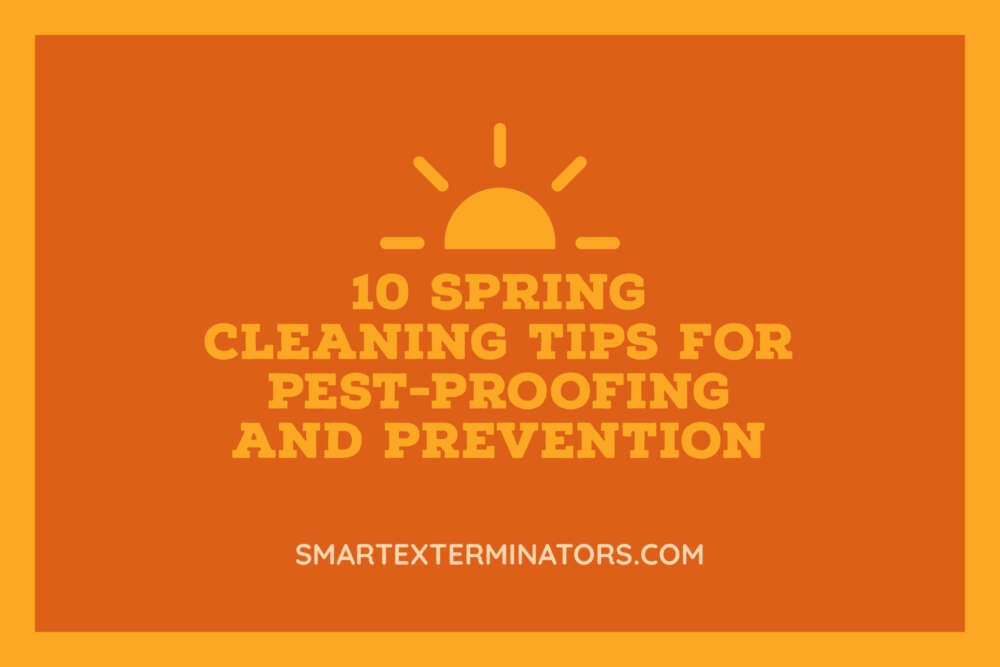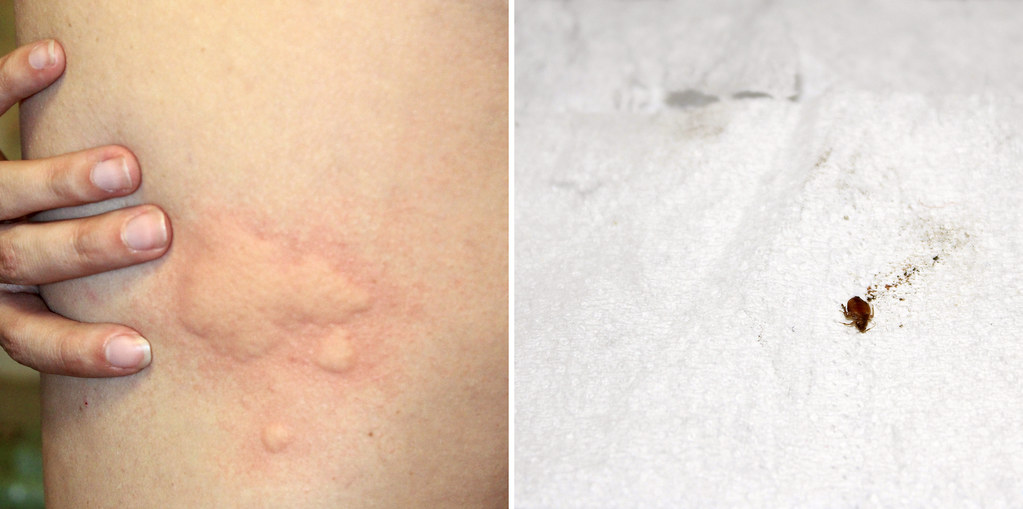10 spring cleaning tips for pest-proofing and prevention

Everyone loves spring cleaning, right? Not always – but being aware of the interior and exterior of your property during this time of year is crucial for pest prevention. After the snow melts, rain and temperatures increase (especially if you’re in Northeast Ohio). You will begin to notice signs of increased pest pressure around your property. This simple checklist will help you implement a strategy for some basic spring cleaning that will help keep your home pest-free.
- Complete an inspection outside and inside of your property.
-
- It is crucial to complete a thorough inspection of the interior and exterior of your property.
-
- Start by looking for visible signs of pest activity and pressure around the home outside. You may notice signs of birds nesting, holes from shrews or voles, wasps or bees around your siding, spider webs, and much more. Next, look for entry points like gaps and cracks around plumbing, electrical, gas, and light fixtures. If you have a deck or crawl space, inspect this area thoroughly. Finally, look at your doors and windows, looking for gaps, cracked caulk, and visible gaps that could be missing proper door seals.
-
- Inside your property, take a look at door seals and windows. Look for signs of moisture and drafts around windows, doors, and baseboards. Inspect under your sinks for signs of dead or active pests and rodent droppings. Check storage areas and your basement for signs of pest activity as well. Another sign to look for is torn-up insulation, electrical, and torn-up paper or bags.
- Come up with a solid game plan.
-
- After your inspection is complete, come up with a plan of action. Make a list of what you need to do and purchase the appropriate exclusion materials. Start with the exterior and then move indoors. If you have signs of an infestation, it is critical to call an exterminator at this point.
- Start on the exterior of your property.
-
- Around the exterior of your property, start by cleaning up leaf litter and debris around the perimeter. You should remove all weeds and overgrown grasses regularly, keeping the areas around your foundation as clear and clean as possible.
-
- Next, caulk any gaps around your window and door trim. Gaps around window/door trim can be prefilled with a backer rod. For example, if you have brick siding, you can buy a mortar caulk to seal the joints. If you have wood siding, you can use an epoxy-based wood filler for extra durability. Use steel wool to fill large gaps.
- Move on to the kitchen and bathrooms.
-
- Look for open gaps around the plumbing under your sinks in your kitchen and bathrooms. Use caulk or foam insulation in these areas – and if the gaps are large, stuff them with steel wool or back rod first. Next, clean any food or pest debris and make sure there are no leaks in any plumbing areas. If there are, you should fix this immediately. Finally, seal off any open food in air-tight containers in your kitchen. Do not leave pet food on the floor, and you should properly store it in containers as well.
- Check closets, storage areas, and utility rooms.
-
- Check these areas for clutter and signs of pest droppings or blatant pest activity. These areas are often overlooked and should be inspected from time to time and cleaned up. Do not leave open boxes of junk as pests like rodents can hide and chew away or drop fecal matter that will ruin and stain your items in storage.
- Complete an attic inspection.
-
- Inspecting your attic is crucial to look for signs of animal or rodent activity, especially if you’ve heard sounds coming from your attic. Look for rodent or other animal droppings, chewed-up insulation, or chewed-up electrical wire. If you have an attached garage, you should check the garage area for this as well. If you find any of these signs, please call an exterminator right away. Not only are droppings a health hazard, but these animals can cause extensive damage to electrical wiring and potentially lead to tripped breakers or even a fire hazard.
- Declutter and donate.
-
- In your basement and storage areas, remove any unnecessary clutter as pests like rodents love to hide in undisturbed areas. Seal off anything you have in storage properly by using plastic storage bins with lids. Try to donate whatever you haven’t used that doesn’t have any value.
- Vacuum and deep clean.
-
- After you’ve completed your inspections and applied prevention methods, now is the time to do a deep clean. Thoroughly vacuum all areas and use a shop vac for hard-to-reach areas under sinks and behind appliances. Next, wipe down all counters, sinks, appliances, and mop your floors and clean your baseboards.
- Get garbage ready to dump.
-
- Throw away anything that you weren’t able to donate from storage. Throw away food that may have been compromised or left open. Now is also a good time to throw away food that may be expired.
- Continuous monitoring.
-
- Continuously monitor your property every few months to look for these signs. You can find signs of pest activity by setting up small glue boards under your sinks and behind appliances. You can email us at info@smartexterminators.com if you need help with pest identification. If you believe you have signs of an infestation, please call an exterminator like SMART Exterminators as soon as possible.
Final thoughts:
Now that you have learned how to properly complete spring cleaning for pest prevention, it is important to keep up with regular cleaning and inspections. Perhaps every 3-4 months depending on your specific circumstances. Regular cleanings and clutter removal will also help keep pests away. If you take the time to do a proper inspection and look for signs of pest pressure around the home, you can help keep your home pest free.



